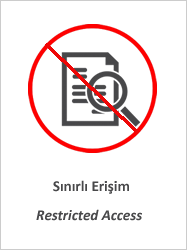New Approach for Endoscopic Endonasal Transsphenoidal Pituitary Surgery: Modified Nasoseptal Rescue Flap
Özet
INTRODUCTION: Endoscopic endonasal approach has become popularly preferred for pituitary surgery in recent years. In this study we described a new technique which is developed by the first author and which is modified from The Rivera-Serrano "salvage" flap approach. With this new technique the septum morbidity was completely prevented and a wider and more comfortable vision was provided for the operation. MATERIALMETHOD: This study consists 7 patients who underwent endoscopic endonasal transsphenoidal pituitary surgery (EETPS) with the described technique (modified salvage flap technique) between 2017 and 2019 and 13 patients underwent EETPS using salvage flap technique. The follow-up period was at least 6 months (24-6 months) for septal integrity. RESULTS: Intraoperative septum integrity was observed in all 7 patients who were treated with modified rescue flap technique. In 9 of 13 patients who had salvage flap technique, intraoperative septum posterior defects were observed. In postoperative follow-up (min postop 3 months), endoscopic examination showed no septal perforation in 6 patients who were treated with modified rescue flap technique, and 1 patient had 2 × 2?mm perforation posteriorly. In postoperative endoscopic follow-up of 13 patients who underwent salvage flap technique (min postop 3 months), 4 patients had complete septal integrity, while 9 patients had different sizes of posterior septal perforation. CONCLUSION: According to other described approach techniques, our modification using a pedicle and septum protective-transposition technique provides improved access to the downstream side of the sphenoid sinus and clivus, allowing the pedicle to slide down and take a more horizontal position. The improved maneuverability of the pedicle created in the case of cerebrospinal fluid leakage as a complication also allows it to be used as a bilateral wing to cover the exposed bone. We think that this technique is the best method to be used for EETPS with modified saline flap technique. Copyright © 2020 by Mutaz B. Habal, MD.
















